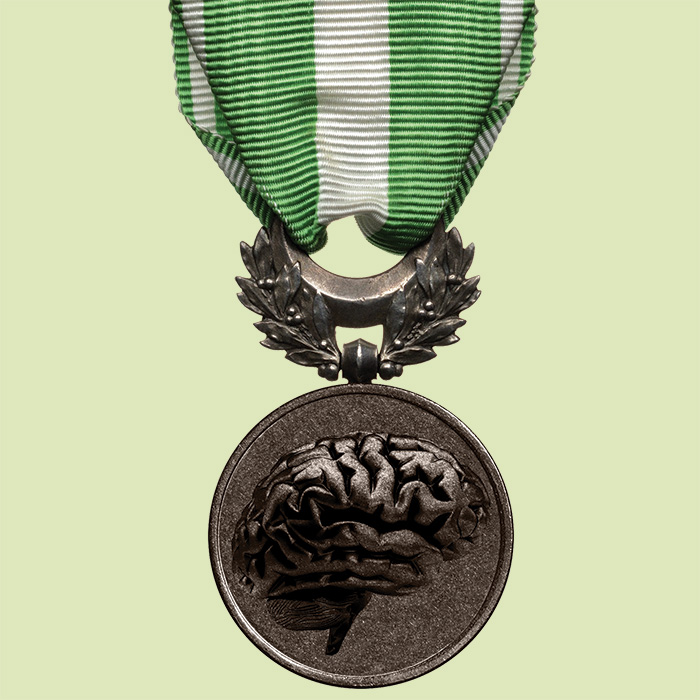Use these finely-tuned psychological insights and a tried-and-trusted 12-week training plan to gain military might where it matters. Hoooah!
Military training is results-oriented because it sets standards and creates goals. There are consequences and rewards depending upon performance levels. These practices, when applied to personal fitness, will translate to amazing overall fitness in a relatively short time. The military’s exercise science and years of trial and error have resulted in developments and improvements that can benefit anyone looking to get into better shape, be he the new recruit or the man wanting to trim up to dance at his wedding.
The following mental game plan is based on 10 years of learning from the variations of each military physical fitness method, writing hundreds of pages of custom workouts and spending thousands of hours training with some of the nation’s top military athletes both Stateside and in the ‘Green Zone’ of the second Gulf War. It is specific, customizable to your goals and it works. If you stay committed to these simple proactive steps for the 12-week period, you will be amazed at your new body and how much better you look and feel. It establishes a template, routine and momentum to stay the course year-round.
Step 1: Set an ultimate goal
Your goal is the compass that points you in the right direction and keep you going in that direction. Do you want to lose fat, gain muscle, increase flexibility … all? Maybe you’d like to be able to climb a 14-er in Colorado. Maybe you’d like to be able to bench 230 lbs. Maybe you just want to look and feel fantastic. To do this, ask how do you see your fitness in 12 weeks? See yourself there. What will you look like? How much better will you feel?
Now, divide these 12 weeks into 4 manageable chunks of 3-week Major Milestone increments. Training 30-45 minutes per day, 5 days a week will get you there. Whether you are preparing for a big event, like a marathon, Basic Training, or just want to enhance your overall wellness, the principles of advanced military fitness training can be concentrated and maximized in these four, three-week increments. If you do your best to adhere to this program in the intended timeline, you will be surprised at how much your fitness will skyrocket.
Step 2: Get your bearings
You must train according to your objective. After you have pictured your ultimate goal – where you want to be when all the hard work, discipline and education of these 12 weeks is done – then find out where you are by assessing the basics. What are your height and weight? How far can you run/walk, how many push-ups, how many sit-ups can you do today?
Next, what is your BMI? Generally, BMI is considered an effective way to evaluate whether a person is overweight or obese, though there are exceptions to the rule. Some muscular people may have a BMI that puts them in the overweight range. However, these people are not considered overweight because muscle tissue weighs more than fat tissue.
According to the National Heart, Lung, and Blood Institute (NHLBI), a BMI from 18.5 to 24.9 is considered normal while a BMI of more than 25 is considered overweight. A person is considered obese if the BMI is above 30, and morbidly obese if the BMI is above 40. Write down your BMI and place the number somewhere where you will see it daily, ideally in your fitness journal.
Step 3: Reinforce a winning mindset
Having an ultimate end goal keeps you on track and gives you a big victory to reach. Doing a program directed towards this goal, sees a shampoo effect set in. Results build up from a small beginning into a lather, and the workouts become routine – more habitual and more automatic.
Remember to revisit visualizing your ideal body, how you feel, how much more capable you will be, what you’ll be able to do. Keep the end in mind. Then, each day, live and train into it. It’s important to maintain a positive outlook, especially during those early mornings as this will make the workouts that much more bearable for you. Remember that it’s you who cares most about your overall level of fitness.
Your primary gym partner is you, good or bad. You are your best motivator and fitness advocate. If you encourage yourself for ‘one more repetition’ or ‘one more lap’ you are being a good partner to yourself, helping your own cause. Once you begin encouraging yourself internally, you are taking more responsibility for your own body. Write encouraging notes in your journal. Remember inspiring quotes. Watch inspirational speakers on the internet. Revisit articles that have helped you. Find new ones. Once you begin this systemic approach, there will be times when you truly enjoy it.
Step 4: Keep a success journal
A success journal is too often an under appreciated means of staying the course. It holds you accountable, especially for those moments where no one is watching and you’re all alone in front of the fridge at 10pm with a decision to make: Blueberries with honey or a little sugar, or that pint of heavenly hash? Remember, you’re going to write it down. And, besides seeing this, you will feel it the next time you train or measure your weight/waistline. The journal is like an extra friend that can help you with accountability and make you become your own advocate.
The contents of your success journal can include daily records of what’s working/not working, workout notes, food intake, how your stamina has been pre-workout and post-workout, a reminder to pick up more groceries and records of your performance numbers. It does not need to be too extensive. As a tool of encouragement, personal accountability, charting your progress, and maintaining enthusiasm and momentum, it is critical.
Step 5: Measure progress with major milestones
The typical way people measure their progress is to step on a scale and look in a mirror. Sadly, your body will not gain and lose weight uniformly. You will experience peaks of muscle growth and fat loss. The important thing to remember is to keep your eye on the major milestones and most importantly, base them off your ultimate goal.
These Major Milestones are in place so you can take stock of your improvements and realign your path to success if necessary. Use these thre-week periods to assess where you are and how your program is working for you. Do not change your diet and workouts every week and certainly not every day. So, if you have only gained 0.5 lbs after the first week, don’t sweat it. Give your body some time, it will be in shock and needs to readjust.
The three-week interval gives your body enough time to change, yet is short enough that you are not wasting time and energy on an approach that is not working. An effective way to measure yourself is once per week on a scale and daily in your success journal. It is OK for you to write on a daily basis. Writing daily will help you immeasurably on your journey to a higher level of fitness.
Let’s say you are a 5’8 tall, 132lb man with a BMI of 20, who is looking to gain muscle over 12-weeks. Your goal is to increase your BMI to 23.0 and weight to 151 lbs. That means you must gain 19 lbs. Of that at least 15 lbs will be pure muscle and the other 4 lbs added fat. Therefore, for your weekly goal, you should be working out and eating enough to gain approximately 1.5 lb of muscle per week.
You should also link three Major Milestones to your 12-week cycle based upon your one Ultimate Goal. For instance, according to the example of the 132 lb. man, every three weeks you should measure yourself to ensure you are gaining 4.5 lbs of muscle and 1 – 1.5 lbs of fat for every Major Milestone.
Using the brief example above you will need to hit the following numbers:
Major Milestone #1
Weeks 1-3: Gained 3.5 lbs of muscle + 1.5 lb of fat. New Weight = 132 + 3.5 + 1.5 = 137.
Major Milestone #2
Weeks 4-6: Gained 3.5 lbs of muscle + 1.5 lb of fat. New Weight = 137 + 3.5 + 1.5 = 142.
Major Milestone #3
Weeks 7-9: Gained 3.5 lbs of muscle + 1.5 lb of fat. New Weight = 142 + 3.5 + 1.5 = 147.
Major Milestone #4 & Ultimate Goal
Weeks 10-12: Gained 3.5 lbs of muscle + 1.5 lb of fat. New Weight = 147 + 3.5 + 1.5 = 152!!
Step 6: Assess your results and fine tune
By the end of the 12-week program your head will be spinning and you will not believe your new body. Assess your before measurements and your final fitness measurements. Compare the two, look at your Major Milestone numbers. Review your weekly weight numbers and think about any slow weeks where you could have tried harder, eaten better or missed a workout. Then think of all the strong weeks where you did well and looking back, you wouldn’t change a thing. Next, review your daily success journal.
Relive all your hard work and accomplishments. Take note of recurring themes (good and bad) and list them. Your Major Milestones give you momentum, they break things down so that you can see and celebrate your progress. At the end of Major Milestone, you’ve done it. You’ve reached your Ultimate Goal. Congratulations – go celebrate with a victory lap.
Get fit on the double
1. Find what works for you
Environment is important. If you like to ramp it up in ultra-competitive environments, like an intense gym or challenging CrossFit environment, do so. If you like a gentler tack like a nature trail, or park, work out there.
2. Don’t go overboard with front-loading your plan
Once a lot of people have started a new physical fitness program, they are excited and looking for immediate signs of improvement. So they go overboard. All of their effort is front-loaded into the first 1-2 weeks of their training. They get up at 6 am, hit the gym, buy a lot of supplements, quit drinking, and basically go too hard too fast. They soon become, sore, tired, and after not noticing any visible changes in their body, they soon quit, discouraged, disappointed, and burnt out. It is better to start a little slower, measure progress less often, and stick to your program than it is to go in with all kinds of gusto and fizzle out after the first 2 weeks. Remember the Tortoise and the Hare? Give yourself some time.








